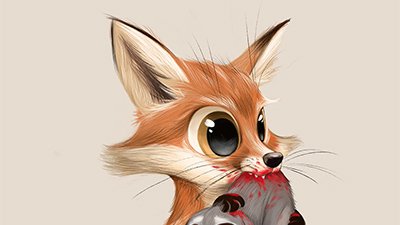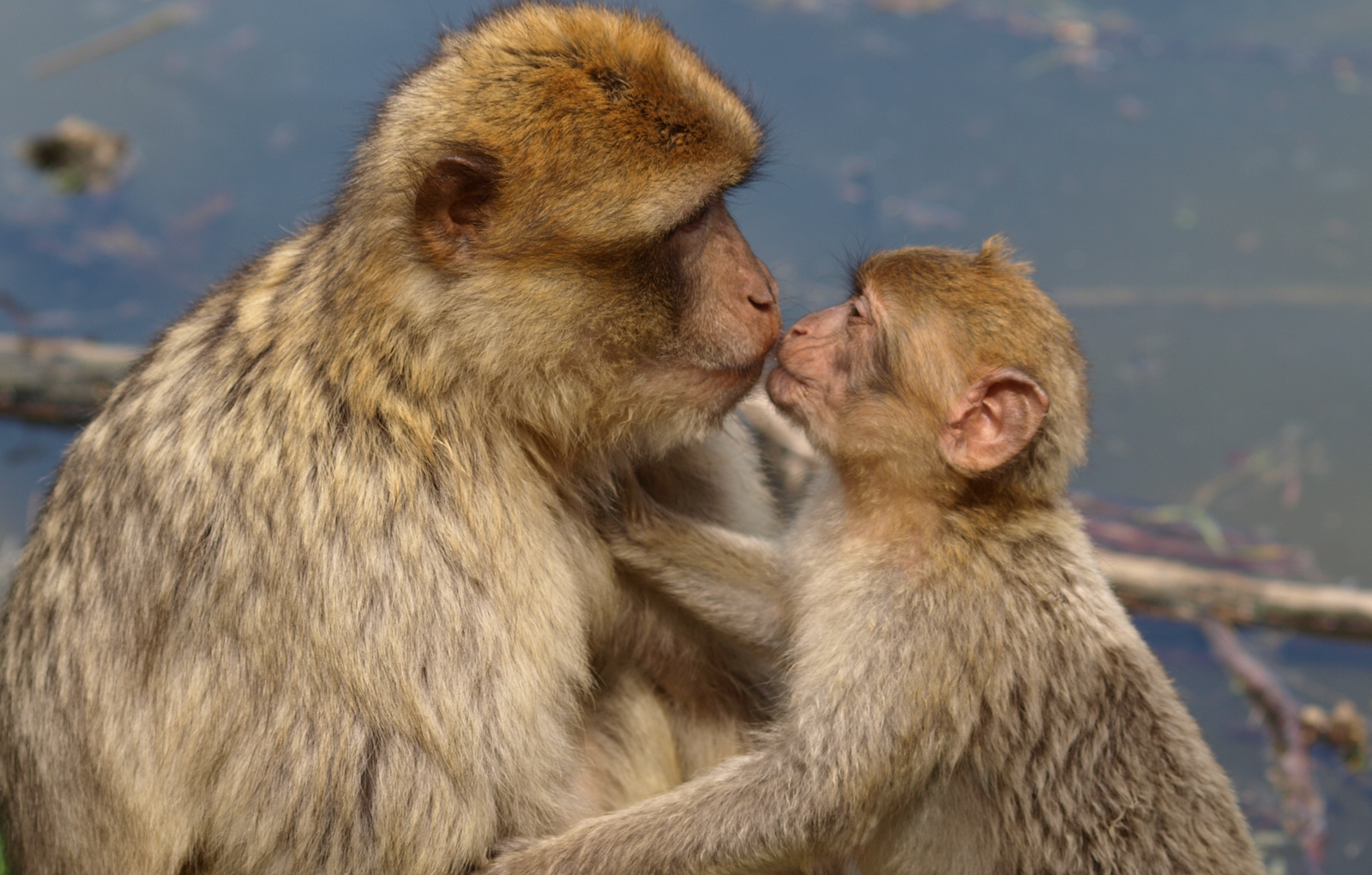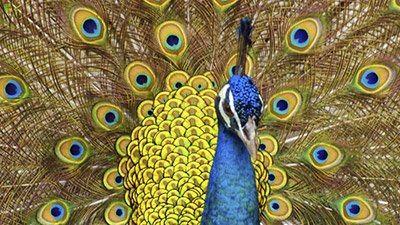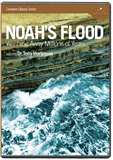Slow-Moving Animal Dispersion After the Flood
How land bridges, rafts, swimming, speciation, and other means can account for the vast dispersion of animals (especially slower animals) from Noah’s ark after the global flood.
It may sound surprising, but most of the mechanisms that evolutionary biologists postulate for animal migration to current habitats (biogeography) are the same ones creationist models hypothesize too, but on vastly different timescales. Organism redistribution involves both paths of dispersion as well as modes of locomotion. Paths may include overland migration, land bridge crossings, and water rafting. Locomotion options include accidental or deliberate transport by humans, flying, swimming, wind-blown carriage (for smaller animals, and especially insects, plants, and seeds).
Some Bible critics see a problem with animal diversity on the planet and the account of the Genesis flood. They cannot see how all the animals on the planet could have possibly descended from the animals that were preserved on Noah’s ark. Furthermore, skeptics of the biblical account of the flood (and immediate post-flood) narrative often point to the implausibility of Scripture accounting for slow-moving animals (like sloths and turtles, for example) ending up in places far removed from the Ararat region in only one to two thousand years. We’ll examine both of these issues in this article.
Created Kinds
Before we look at different modes of dispersal and migration, we need to first understand that Noah brought representatives from each created kind onto the ark. Creationists understand that the classification category of species is not the same as the Genesis created kind. Created kinds are called baramins. This field of study within creation science is called baraminology. Species is a man-made classification that is generally defined as an interbreeding unit that is reproductively isolated from other units. It is well known, however, that individuals from different species or even different genera or families can potentially interbreed, though they do not normally do so. There are factors that can cause “reproductive isolation” within a large group of animals. Animal behavior, size, environmental separation, or complex reproductive strategies can deter reproduction. Animals that can reproduce, but normally do not, would be included within one Genesis kind. In the current evolutionary classification system, however, “splitters” have dominated. They are more likely to split animals into different species within a genus based on the tiniest differences. The original Genesis kind was a much broader classification than a species, most often at the family level, but sometimes at the genus level. Less commonly, the kind may be at the species level, and mostly in cases where there is only a single surviving species.
Defining the Genesis kinds is very difficult because we do not know enough about the genomes of many animals, and it is at the genetic level that the kinds likely need to be defined. Even the test of inability to interbreed is not a foolproof determination because we do not know how genetic defects (mutations, etc.) have built up over time to interfere with the reproductive process. We also have come to realize that some animals which appear to be one kind do not interbreed (at least normally) because of different ingrained behaviors (a scientific subfield called ethology) or sexual selection based on preferential courtship (including color, ornamentation, nest-building prowess, and other such complications).
Speciation Mechanisms
Speciation occurs due to conditions uniquely favorable to created heterozygosity and is shaped by natural selection, genetic drift, founder effect, geographic and genetic isolation, climate factors, etc.
Created heterozygosity lends itself well to providentially allowing animals to diversify in various conditions. It is shaped by natural selection, genetic drift, founder effect, geographic and genetic isolation, climate factors, etc. While these factors are all in play today, the selective pressure is nowhere near as great in most animals as it was at the time of the early post-flood period, mostly because of the bottleneck that occurred at that time. Even recent evolutionary biologists have discovered that most species appear to have a recent origin. Of course, they still believe in long evolutionary ages, but this just highlights that it is not necessary.
When phenotypic changes occur within small populations, genetic drift or founder effect is often the cause. Genetic drift is the result of the probability that in each generation some individuals by chance leave behind more descendants than others. Those individuals’ genes, therefore, are more highly represented in the later populations without any regard to fitness for survival. Founder effect is the result of a genetic bottleneck, such as occurs when a small portion of a population is segregated and then reproduces with decreased genetic variability. Both genetic drift and founder effect are magnified in small populations. The other factor in play here is that as speciation occurs, animals typically lose genetic information and tend to become more specialized in diet, habitat, and mating preferences. During the post-flood dispersal, many animals would have become geographically isolated as well, leading to further bottlenecks (and thus increasing genetic drift probability).
What is the point of all of this? It is that present-day animals are the descendants of biblical “kinds” that Noah brought on board the ark. Biblical kinds are usually not the same as present-day animals. For example, there were two bears of the bear kind on the ark. There were not two of each polar, brown, black, sun, sloth, and spectacled bears. It was the two bears on the ark that later speciated into the varieties we have today. Likewise many animals have become more specialized in diet, habitat, size, coloration, etc., and are thus less diverse genetically and typically less able to deal with environmental fluctuations than their ancestors.
Land Bridges and Rafting
The Bering land bridge (Fig. 1 below) is recognized as having been crossed by mammoths, mastodons, wooly rhinos, horses, camels, caribou, moose, elk, muskox, lemmings, black bears, and humans.
Both creationists and evolutionists accept land bridges as a viable mechanism for biogeography (the geographical distribution of plants and animals). The Bering land bridge connected Siberia to Alaska and would have been exposed during the early parts of the ice age and free of ice for much of that time due to the warmer oceans on both sides of it (the Arctic Ocean and Bering Sea). The Bering land bridge (Fig. 1 below) is recognized as having been crossed by mammoths, mastodons, wooly rhinos, horses, camels, caribou, moose, elk, muskox, lemmings, black bears, and humans.1 There were also land bridges connecting Australia with New Guinea called the Sahul shelf and connecting Indonesia to the S.E. Asia mainland (Sunda, Fig. 2 below). Although these two land bridges did not connect to each other, they still would have allowed many animals, especially swimmers and flyers, as well as people to navigate between the Asian mainland and Australia. Additionally, there could have even more easily been corridors of migration if rafting is included into the Sahul/Sunda land bridge model. Another land bridge, called Doggerland (Fig. 3 below), connected Continental Europe to Great Britain (with the area at its greatest extent during glacial maximum, connecting the United Kingdom, Ireland, mainland Europe, and the Scandinavian peninsula).
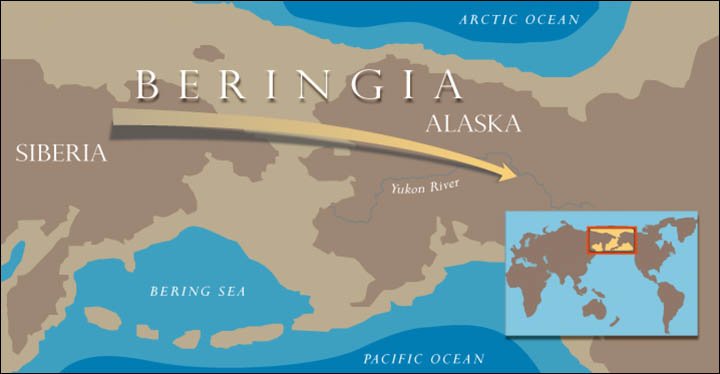
Figure 1. Image from The Siberian Times.
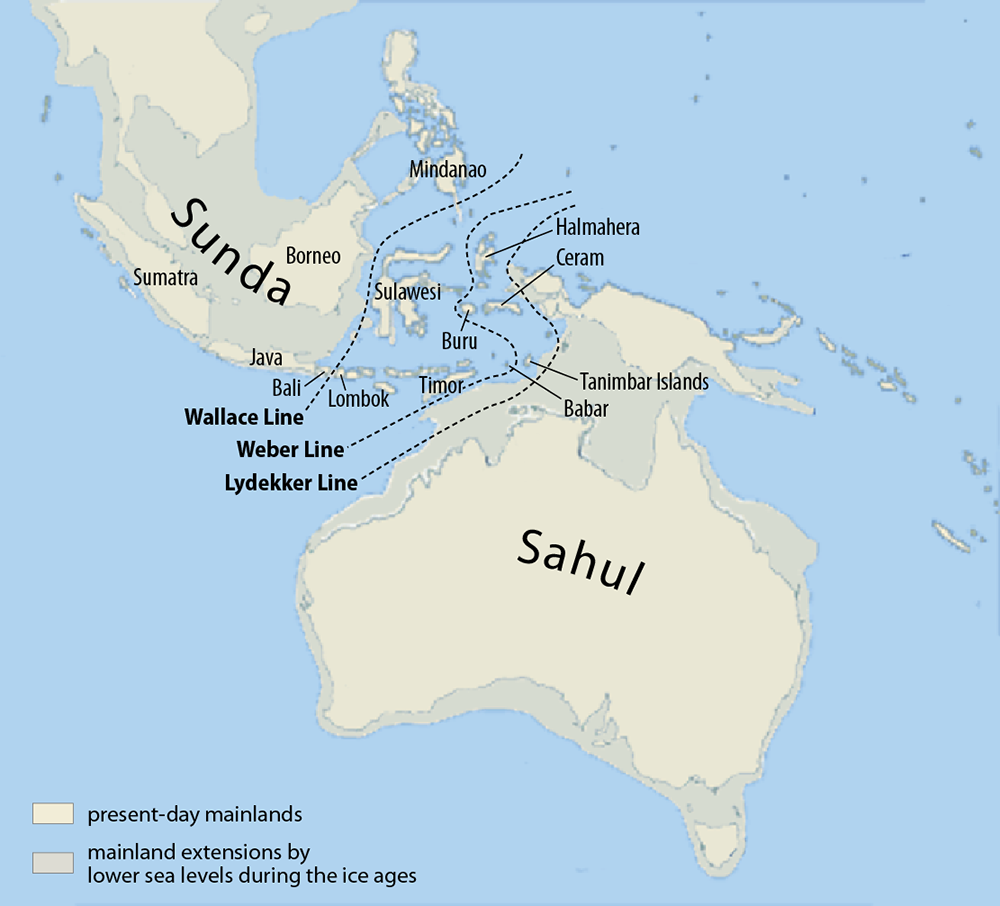
Figure 2. Image by Chumwa, via Wikimedia Commons.
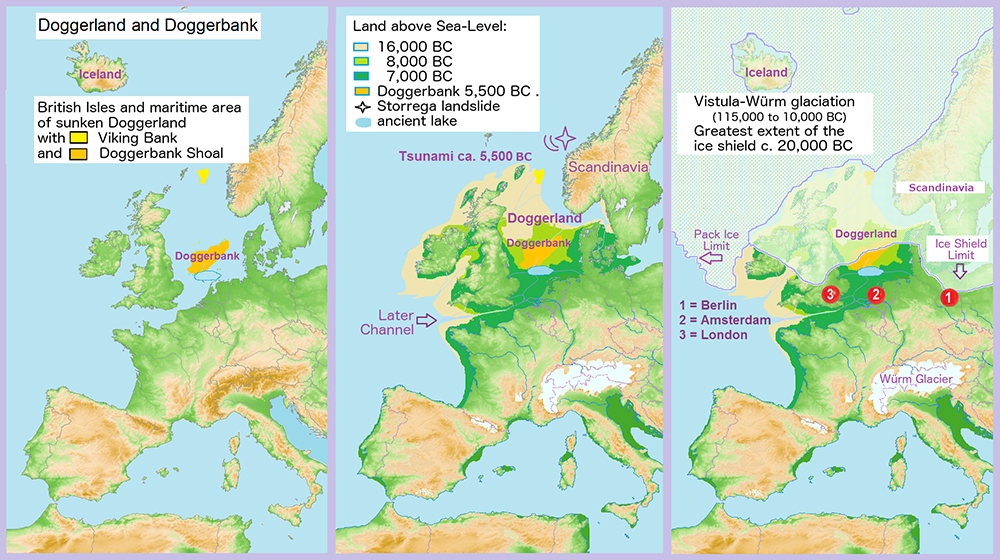
Figure 3. Image by Alphathon, via Wikimedia Commons.
Rafting is one of the most popular animal biogeography models in both creation and evolutionary models. Evolutionary biologists have posited rafting models for lemurs, rodents, and other carnivores in Madagascar2, some monkeys in South America3, iguanas in Anguilla4, two species of cuscus on the island of Sulawesi5, and worm lizards to several locations worldwide.6
Flight, Air Dispersal, and Swimming
Many animals can fly or swim across oceans, and small animals, such as insects, can be blown by winds to different islands or coastlines.
Many animals can fly (birds and bats) or swim across oceans, and small animals, such as insects, can be blown by winds to different islands or coastlines. In fact, some flying insects can actively ride jet streams and direct their migratory paths to some extent.7 The invasive horse chestnut leafminer, Cameraria ohridella, was first described in Macedonia and in 19 years had been dispersed primarily via flight or wind carriage as far as Great Britain and all of continental Europe, averaging 60 km (37 miles) per year.8 Although it is unknown if insects were taken onto the ark as passengers, insect migration would likely have directly impacted bird and bat migrations in the post-flood world. And lastly, we cannot discount “hitchhiking” animals as passengers with humans, whether as accidental stowaways or by people taking them as pets, draft animals, or as food sources. In the latter category, turtles and tortoises have long been taken by sailors aboard ships for sustenance.9 The ancient Polynesian seafarers would bring lots of animals on their voyages as starter breeding populations and also as food, in addition to seeds and plants to start new crops.10 They would also catch turtles and tortoises and either eat them on the voyage or take them to their future island home. It is not implausible to reason that ancient Phoenician, Chinese, Greek, and Roman mariners also ate and captured turtles and tortoises. We have records of the Tamil mariners of the Chola Empire (4th Century BC–1279 AD) in southern India and South Asia mapping and following sea turtle migration routes for navigation and likely as a food source for meat and eggs.11
How to Get There from Here
Let’s look at five key points to consider regarding post-flood animal migration.
- Fairly soon after the flood, most biblical scientists believe that the world was plunged into the ice age (although there was probably a few decades of lag time between the two events). It is postulated that as glaciers started spreading, sea levels dropped, and either land bridges or island chains emerged that were conducive to "island-hopping" recolonization. Even with present topography, a number of significant land bridges would have existed to facilitate migrations if the sea level were only 180 ft. (55 m) below current levels. However, there is even evidence that the oceans in some places where land bridges existed could have been lower still. Thus, land bridges facilitated by the ice age constitute a serious model to explain how some migrations could have been possible. But this window of migration likely closed rapidly once glaciers began to recede off the continents and sea levels rose. This may have cut off some types of mammals from further migration. One such example is the Eurasian lynx vs. the Canadian lynx.
- There are also theories that many animals may have been able to migrate on huge floating mats of vegetation, ripped up during the late flood period and from early post-flood catastrophes and still floating after the animals had left the ark. (Some may also have been transported by people or perhaps by swimming as will be discussed below.) Even today, with higher sea levels, one could potentially (under optimum conditions) island-hop from Asia to Australia with less than 50 miles of open ocean at any one spot. (This can be verified by Google Earth.) With a lot of vegetation (log mats, for example) in the seas in early post-flood period, animals could have “rafted” to other islands or even continents. Likewise, monotremes were once thought to be unique to Australia, but the discovery in 1991 of a fossil platypus tooth in South America stunned the scientific community.12 Today, there are only two living monotremes, the platypus, found in Australia, and the spiny anteater, or echidna, which lives in both Australia and New Guinea. Another common misconception, that all marsupials except the Opossum are in Australia, is false; there are many marsupials in Indonesia and its archipelagos, some of which live there and in Australia (like the tree kangaroos).
Now, taking the 50 miles of open ocean comment above and then dropping sea level the 180 ft. (55 m), the 50 miles shrinks down considerably. The Indonesian island of Java would have been connected to the Island of Borneo and to mainland Asia, and New Guinea would have been connected to Australia. Land bridges would have existed between some islands, and the largest open ocean would have shrunk down to possibly less than 12 miles if you island-hopped. But like the land bridges which came later in the post-flood world (during the ice age), the floating mats of vegetation would have had a limited window of opportunity, most prominently in the pre–ice-age, post-flood world. As the vegetation mats became waterlogged, they would have sunk, and storms would have eventually broken up the vegetation mats. So the optimal timeline for rafting occurred early on, and it appears that the marsupials had made it to Australia before the ice age by rafting. Even today when there are hurricanes, tsunamis, and other strong storm surges, small mats of vegetation can be ripped up from coastlines or islands and carry animal passengers with them. On October 4, 1995, at least 15 green iguanas were spotted on the eastern beaches of Anguilla in the Caribbean. This species had not previously been found on the island. They arrived on a mat of logs and uprooted trees, ripped up from other Caribbean islands by Hurricane Luis. Some of the mats were more than 30 feet long and had large root masses. The raft and the iguanas most likely came from Guadeloupe, some 155 miles (250 km) away. According to the researchers writing the paper, “Our observations confirm that raft dispersal can occur successfully, and document the over-water dispersal of a group of large vertebrates and their persistence and possible reproduction after landfall.”13
- There may be some possible merit and a hypothesis to be gleaned from some residual tectonic movement from the flood, possibly extending for decades post-flood. If catastrophic plate tectonics was initiated by the flood (as implied by Genesis 7:11) and was causing mountain building and continental uplift late flood and early post-flood (as suggested by Psalm 104:8-9), and we know that today the continents are still moving (at a few mm or cm per year), then it is likely that the rapid plate motion during the flood was still decelerating during the first few decades post-flood so the plates were still moving apart or together at a greater pace than today. What if some island chains were much more interconnected so that swimming, island-hopping, and rafting on vegetation mats could more readily occur? Animal migration from the ark then becomes much easier than it would be today. This is only a hypothesis, but it does have some logic behind it. Secular scientists have no issue with admitting that the continents were once connected (and actually have many “supercontinents” proposed, of course in the evolutionary geological paradigm of millions of years ago). Creation scientists would claim that plate tectonics did not begin until the onset of the flood and continued for some time (indeed is still continuing, especially with the Indian and Eurasian plate collision causing the Himalayas to still be pushing up). So, it is certainly possible that the distance between continents or continents and islands, for example Madagascar and Africa, may have been a little closer for a few decades post-flood. It should also be pointed out that there are several islands between Madagascar and Africa in the Mozambique Channel, most notably the Comoros Islands and Mayotte, so island-hopping and/or rafting could be a plausible explanation for Madagascar’s fauna and is actually what evolutionists propose happened. Apart from the evolutionary timeframes, the mechanisms are the same.
- Crocodilians, sea snakes, otters, elephants, marine iguanas, and many other animals that would have been on the ark are easily capable of swimming vast distances. In 2011, researchers recorded that a radio-collared adult female polar bear in the Beaufort Sea made a continuous swim of 427 miles (687 km) over 9 days and then intermittently swam and walked on the sea ice surface an additional 1,118 miles (1,800 km).14
- Stowaways and animals taken by humans, as mentioned earlier, are viable dispersal methods. Rodents have been frequent stowaways on ships from antiquity to present. Humans migrating to different lands often take work animals, food- or clothing-source animals, and even pets with them. Also, even with the “fear and dread” animals had towards people, determined humans could have still taken animals with them, some of which could have been domesticated and others trapped and transported in chains or cages.
There are also theories that many animals may have been able to migrate on huge floating mats of vegetation, ripped up during the late flood period and from early post-flood catastrophes and still floating after the animals had left the ark.
How Slow Can You Go?
So while the skeptic may rightly point out that the singular ark sloth pair almost certainly could not have migrated to South America, several generations of sloths later, they could have easily made it . . .
But we still have the issue of slow-moving animals getting from the Ararat region of Turkey/Armenia to areas near oceans where they could have rafted or crossed land bridges. One of the common examples used by skeptics is the two- or three-toed sloth. Their average speed on land is about 0.17 mph. Based on the distance (approximately 5,600 miles) from the region of Ararat to the western edge of Portugal (which connects with the Atlantic Ocean), it would require close to 20,000 hours of total travel time (which is about 2.3 years). Conversely, some claim that they may have crossed the Bering land bridge and migrated down the coast and into South America. Skeptics then claim that the distances involved (around 20,000 km or 12,427 miles) are far too great for sloths to migrate. But it must be kept in mind that populations of animals would have had centuries to migrate, relatively slowly, over many generations. So while the skeptic may rightly point out that the ark sloth pair almost certainly could not have migrated to South America, several generations of sloths later, they could have easily made it to the coast and then been rafted across the Atlantic ocean to the northern part of South America or crossed Asia and entered into North America via the Bering land bridge, then made their way to South America. One other point worth making is that sloths are surprisingly good swimmers.15
Sloths are not built for long-distance swimming but can easily navigate rivers and lagoons.16 One species is documented as swimming in the open ocean around the offshore island it lives on.17 Rafting might not have been as traumatic an experience for sloths as most people would think. But all of the calculations above are based on current sloth speeds. They have almost certainly become more specialized in their lifestyles, now being primarily arboreal (living in trees and thus even slower on land). The original sloth kinds may have been better adapted to land and much faster than they are currently. Additionally, most fossil sloths are much larger than the current species, and were mostly ground-based, not arboreal. Sloths arriving in South America could have happened within 100–200 years after the flood.
We’ve already discussed tortoises and turtles, which have been transported by humans to far-flung Pacific islands, but what about migrating to North and South America? Tortoise speeds vary, with the “fast” Leopard tortoise able to move at 0.62 mph and some land turtles able to move over 1 mph. Softshell turtles and terrapins have been recorded moving as fast as 3 mph.18 Again, given time over several generations, worldwide turtle and tortoise distributions can be explained by dispersion and migration from Ararat by overland crossing and/or also utilizing floating mats of vegetation. Sea turtles are much faster, and some have been clocked as fast as 22 mph underwater.
River Rafting 101
Additionally, for all animals, including slower-moving ones, like sloths and turtles, we cannot discount the possibility of swollen rivers carrying animals aboard uprooted trees, vegetation mats, and even floating islands. Rivers could have carried the animals out to sea or deposited them much further inland as the flow reduced. This could have easily occurred in the early post-flood world when the groundwater table was extremely high. Hypercanes would have also been rampant at this time, dumping water on continents and swelling rivers with debris (and hitchhiking animals). Those deposited near land bridges could have made their way across to new territories during the Ice Age when sea levels were lower. Then again at the end of the ice age, when glaciers were retreating, rivers would have been swollen with glacial meltwater, which could have eroded banks and carried clumps of earth, trees, and other vegetation downstream, facilitating animal dispersal. Occasionally when tropical storms move inland and dump large amounts of water in a short time, rivers even today can be seen to have large log or vegetation mats on them, floating downstream, invariably with animals on them.
Global dispersion from the Ararat region, of even slow-moving creatures, is easily explainable within the creation biogeography model.
Global dispersion from the Ararat region, of even slow-moving creatures, is easily explainable within the creation biogeography model. With the continuing catastrophes occurring after the flood, conditions were ripe for a variety of dispersal mechanisms of animals. Finally, we must remember two very important biblical principles. God specifically wanted the animals to repopulate and fill the earth: “Bring out with you every living thing that is with you of all flesh—birds and animals and every creeping thing that creeps on the earth—that they may swarm on the earth, and be fruitful and multiply on the earth" (Genesis 8:17). Secondly, God put the fear and dread of man into animals (Genesis 9:2), making them more likely to spread out far away from humans and expand into areas where man had not yet migrated. This would have also given them the opportunity to establish large populations before they were hunted as food resources, especially with mankind initially disobeying God’s command to spread out (Genesis 11:4). With these two biblical commands by God in mind, and with the environmental conditions suitable to facilitate animal dispersal, the creation biogeography model becomes not only feasible but inevitable.
Footnotes
- “Beringia,” Yukon Beringia Interpretive Center, accessed February 9, 2022, https://www.beringia.com/exhibits/beringia.
- C’eline Poux, et al., “Asynchronous Colonization of Madagascar by the Four Endemic Clades of Primates, Tenrecs, Carnivores, and Rodents as Inferred from Nuclear Genes,” Systematic Biology Vol. 54 No. 5 (November 2005):719. https://www.researchgate.net/publication/7522379_Asynchronous_Colonization_of_Madagascar_by_the_Four_Endemic_Clades_of_Primates_Tenrecs_Carnivores_and_Rodents_as_Inferred_from_Nuclear_Genes
- Jason Daley,“21 Million Years Ago, Monkeys May Have Floated to North America on Rafts,” Smithsonian (April 21, 2016) https://www.smithsonianmag.com/smart-news/monkeys-may-have-come-north-america-rafts-180958864/
- C. Yoon, “Hapless Iguanas Float Away and Voyage Grips Biologists,” The New York Times, March 13, 2008.
- T. Heinsohn, “A Giant Among Possums,” Nature Australia 26(12):24–31, Autumn 2001.
- Elizabeth Mitchell, “Oceanic Dispersal Rafted Worm Lizards Around the World,” April 25, 2015, https://answersingenesis.org/animal-behavior/migration/oceanic-dispersal-rafted-worm-lizards-around-the-world/
- Janet Fang, “Moths catch the wind to speed migration,” Nature (February 4, 2010):1. https://www.nature.com/articles/news.2010.54
- M. Gilbert, et. Al., “Long-distance dispersal and human population density allow the prediction of invasive patterns in the horse chestnut leafminer Cameraria ohridella,” Journal of Animal Ecology, Vol. 73 (2004): 459–460
- “Galápagos Tortoise,” San Diego Zoo Wildlife Alliance, accessed February 9, 2022, https://animals.sandiegozoo.org/animals/galapagos-tortoise
- Momi Awana, “What Did Ancient Polynesians Take on Their Voyages?” accessed 9 February 2022, https://classroom.synonym.com/did-ancient-polynesians-voyages-6889.html
- Arjunan Shrikumar, “Sailing in Search of History,” April 29, 2016, https://www.thehindu.com/features/metroplus/society/sailing-in-search-of-history/article8537040.ece
- Tim Thwaites,“Duck-billed platypus had a South American cousin,” New Scientist, (August 23, 1991). https://newscientist.com/article/mg13117831-200-duck-billed-platypus-had-a-south-american-cousin/
- Ellen J. Censky, Karim Hodge & Judy Dudley, “Over-water dispersal of lizards due to hurricanes,” Nature, Volume 395 (1998): 556. https://www.nature.com/articles/26886
- George M. Durner, et. Al., “Consequences of long-distance swimming and travel over deep-water pack ice for a female polar bear during a year of extreme sea ice retreat,” Polar Biology, Volume 34, (2011): 975. https://link.springer.com/article/10.1007/s00300-010-0953-2
- “Unexpected Swimmers: 3 Land Animals That Do Well in Water,” World Wildlife Fund, July 8, 2014, https://web.archive.org/web/20201111234527/https://www.worldwildlife.org/stories/unexpected-swimmers-3-land-animals-that-do-well-in-water
- “Are Sloths Good Swimmers? (7 Awesome Reasons They Are)” accessed February 9, 2022, https://www.natience.com/are-sloths-good-swimmers/
- Melissa Breyer, “Panama's Swimming Pygmy Sloths Take to the Sea,” July 2, 2020, https://www.treehugger.com/panamas-swimming-pygmy-sloths-take-sea-4859197
- Brock Yates, “Fast Turtles,” December 9, 2020, https://www.allturtles.com/fast-turtles/
Recommended Resources

Answers in Genesis is an apologetics ministry, dedicated to helping Christians defend their faith and proclaim the good news of Jesus Christ.
- Customer Service 800.778.3390
- Available Monday–Friday | 9 AM–5 PM ET
- © 2026 Answers in Genesis


